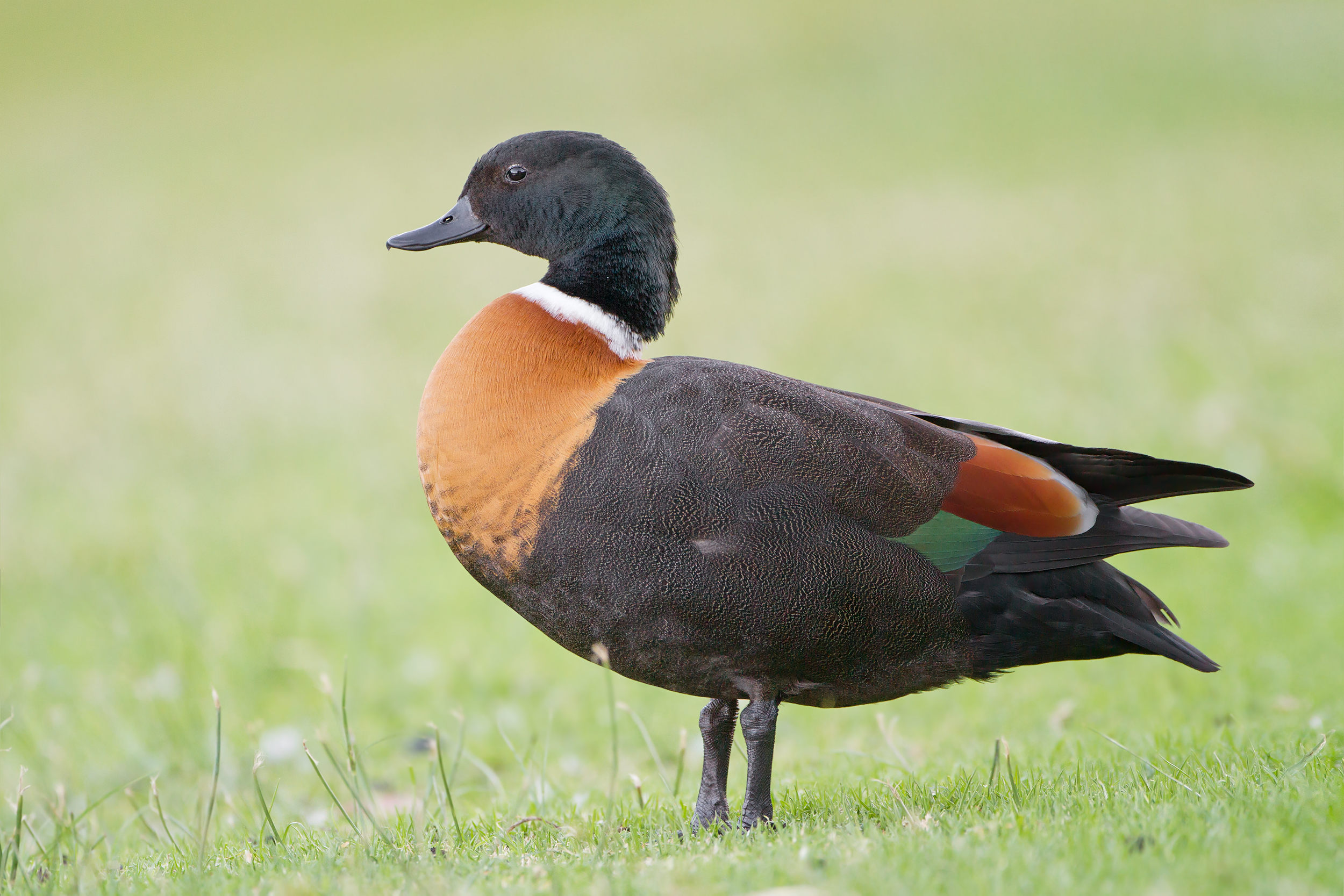
Australian shelduck(Tadorna tadornoides)
Phylum —chordata
Class — aves
Order — anseriformes
Family — anatidae
Genus –tadorna
Appearance
The males are mostly dark, with a chestnut breast. They have white neck collars and dark green heads. The females are similar, but they have white around the eyes and are smaller. Both males and females show a white wing during flight.
Length – 56-72 cm, weight – 1,3-1,6 kg.
Habitat
The Australian shelduck mainly breeds in southern Australia and Tasmania and is still fairly common. In the winter, many birds move farther north than the breeding range. As with other shelducks, this species has favorite moulting grounds, such as Lake George, New South Wales, where sizeable concentrations occur.
Behavior
Australian shelducks can often be seen in flocks of up to 1,000 or more. Like paradise shelducks, they are typically wary and difficult to approach, but can become habituated to people in urban settings. They are very upright both on land where they graze at dawn and dusk, and on the water, where they sit very high. Although young birds dive frequently, adults only dive during their moulting period when they are flightless, or when injured or frightened.
Diet
Australianshelducks can feed by grazing, dabbling or filtering. They consume tubers and other plant material, including of saltbush and samphire, along with a range of crustaceans, insects and mollusks.
Reproduction
Australianshelducks usually breed in a down-lined cavity of a hollow tree-limb, but also sometimes in caves or burrows, and sometimes under vegetation. After leaving the nesting hollow, the flightless, downy young may aggregate in creches of 20-40, or in extreme cases, a hundred birds.
Incaptivity
Lifespan -up to 20 years.
Shelducks are perfectly adapting to life in aviaries, grow well and regularly give healthy offspring, which are selflessly taken care of by both parents. The main difficulty faced by beginners in breeding of these birds is their excessive aggressiveness during the breeding season, intolerance of the presence of birds of any kind in the breeding territory. A male guarding a clutch of a female or brood can pounce on both a large bird of prey and a predatory mammal and a human.
At the same time, a couple with their own brood often takes other birds` chicks under their protection, and sometimes even takes them away from their parents. Young birdsunder 2 years of age who have not reached sexual maturity are more tolerant to life in a large flock. Adult birds get along peacefully with other representatives of waterfowl during the molting period at the end of the nesting period. But, in addition to seasonally aggressiveness when the male defending its territory can kill smaller ducks and even geese, we need to understand that bird keeping in mixed flocks can be the reason for hybridization with any of the members of the genus Tadorna, as well as geese, breasted geese and domestic ducks.
Large aviaries as a place for seasonal keeping of a small group of adult immature or molting birds should be much more spacious than for any other waterfowl. The minimum size of the enclosure for a pair of shelduckscannot be less than 100 square meters. For good growth, regular reproduction and preservation of the brood population, it is necessary to provide the shelducks with the opportunity to graze on a large area with low grass. It is recommended to equip a large, shallow pond.
During a long frosty period, ducks need dry, enclosed spaces. The room temperature should be at least 10 oC.If birds are outsideduring the cold weather for a long period of time they have frostbite of the paws.
In captivity, it is important for shelducks to have a possibility of grazing on grass. The natural herbal diet is supplemented with special compound feeds and bread. In winter, the grain diet consists of wheat, oats, lentils, peas, crushed corn is supplemented with finely chopped peelings of vegetables such as potatoes, carrots, cabbage and others.
Hatched ducklings are fed with industrial starter feed. Duckweed, a lot of chopped greens − lettuce and spinach, insects and earthworms are useful for the growth of chicks. Providing access to low-grass pasture from an early age guarantees the brood rapid growth and maximum survival. A shallow container with clean drinking water, which is replaced as it becomes contaminated, but at least once or twice a day, should always be in the place of feeding the bird.
 Russian
Russian
 English
English
























